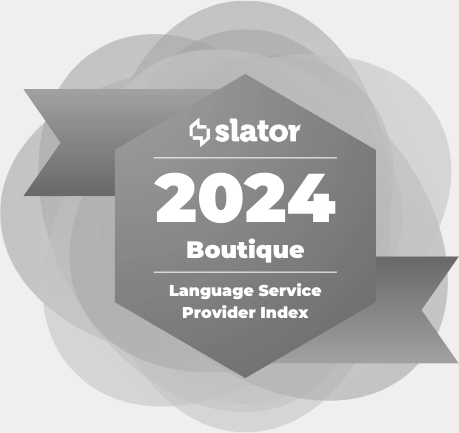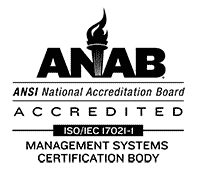Translation & Interpreting Summit Advisory Council 2011 Meeting
Translation & Interpreting Summit Advisory Council 2011 Meeting
October 25, 2011
Boston, MA
.jpg)
Mission Statement: To provide a vehicle for cooperation among organizations concerned with language translation and interpreting, in order to foster the following mutual objectives:
- Strengthening the T&I community across government, education, and industry sectors,
- Promoting awareness and image of careers in T&I, and
- Informing buyers on how to obtain appropriate T&I services
Representatives:
- ACTFL, Ray Clifford
- AILIA, Ann Rutledge
- ALC, Marla Schulman (absent)
- AMTA, Laurie Gerber
- ASTM-F43, Bill Rivers
- ATA, Nick Hartmann and Dorothee Racette
- BTB, Donald Barabé (absent)
- CTTIC, Denis Bousquet
- FIT, Jiri Stejskal
- GALA, Hans Fenstermacher
- ILR, Maria Brau
- ISO-TC37, Sue Ellen Wright
- MLA, Catherine Porter
- NAJIT, Alex Rainof and Rob Cruz
- NVTC, Mary Ellen Okurowski
- SSTI, Lois Feuerle
- Other member organizations that are not represented at the meeting: ATISA, TAUS
- 1. Preparing a new generation of translators and interpreters
Bureau of Labor Statistics 2010 report on T&I profession.
ATA School Outreach program (K-12) has a new chair; the program needs to be promoted among TISAC members
Government-led effort to teach “critical languages” at the K-12 level (STARTALK, a Presidential Initiative to Fund Summer Programs in Critical Languages including Arabic, Chinese, Hindi, Persian, Turkish, Swahili and Urdu); Catherine Ingold (University of Maryland) is the point of contact.
Reach out to language teachers through ACTFL and JNCL to introduce careers in T&I
Contact National Network for Early Language Learning about School Outreach program
University-level: MLA’s 2007 report promotes translation as a profession; Language Consultancy Working Group chaired by Catherine Porter to support changes in language departments. Catherine is co-editing a book on translation pedagogy. ACTFL’s Discover Languages program; more visibility needed among members.
AILIA has been mandated by the Canadian government to promote the T&I profession; has received a sizeable grant (a three-year program). AILIA is now promoting T&I through job fairs. The Canadian government also subsidizes internships at translation companies (Traduca). In Canada, only 300 T&I students graduate each year – not enough to replace the retiring practitioners. LinguisTech serves as a portal for translation students and provides translation memories to them.
Practically every government department hires linguists.
National Language Service Corps; NLSC Members make themselves available to help others in times of emergency or crisis – federal program.
TISAC website could serve as a clearinghouse for internships in T&I.
T&I program list update: Anthony Pym maintains a list on FIT website; TISAC will provide updated list for the US. The US list is on TISAC site. The objective is to create a password-protected database so that individual programs can maintain their data. The list needs to be publicized through ATA, ACTFL, and other venues. Canadian list is also up to date.
- 2. Follow-up on 2010 trade council discussion
Representation of the private sector in the government (represents about $15 billion in the US – “language enterprise”). Federal funding for K-16 in foreign languages: FLAP has been eliminated. Lack of funding for T&I programs. JNCL/NCLIS is the primary lobbying organization for foreign languages. At present, JNCL/NCLIS is a membership organization of language teachers; no private sector representatives. JNCL/NCLIS board has been charged by developing relationship with the private sector; Bill Rivers is involved in this effort. JNCL/NCLIS is currently academically focused and is unaware of the size and growth of the T&I industry. Language budgets are being cut in the public sector, while the T&I industry prospers in the private sector. JNCL/NCLIS is exploring the possibility of accepting private businesses as members.
TISAC objective: prepare a joint statement on the needs of the language industry and how the government can support it. TISAC could join JNCL/NCLIS as a group, or encourage its members to join. Considerations: TISAC represents not only US organizations, but also Canadian and international ones. Also, if individual TISAC members were to join JNCL/NCLIS, the T&I industry would gain more votes.
The “Trade Council” could provide education to the buyers of T&I services in the government space and seek funding for developing T&I courses within flagship programs; develop standards and monitor and influence T&I-related developments in the government.
- 3. T&I-related standards
ASTM F43 committee has been approved a year ago. Four technical committees within F43; each is developing 1-3 new standards or standard guidelines. The translation committee is linked to the ISO TC37 (which also serves an advisor to ASTM F43, together with ISO TC232 – Language Training). Objectives: to make the procurement easier for the buyers of T&I services; reaching out to GSA; cooperation with the Defense Standards Program; effort to reduce or eliminate low bids and set-asides that cannot deliver; standards as a venue to have a substantive conversation among various stakeholders.
ISO TC37: Current title is “Terminology and other language and content resources”; proposed new title: “Terminology and multilingual resources”. New SC5 subcommittee has been formed to replace SC6 WG2 to represent translation and interpretation services. 13611 draft on community interpreting is in progress; practice and legal restrictions vary from country to country. Assessment of translation draft is currently in limbo. ISO 17100 – Requirements for Translation Services – is growing out of a CEN standard and making a good progress. This standard could define the certification process, based on the Deming philosophy that underlies the ISO 9000 standard series.
There are other bodies besides ASTM and ISO that need to be considered; for example, ETSI is now continuing the work of the defunct LISA.
ISO TS 11669, Guidance for Translation Projects will have a three-year life after May 2012 and after that it will either become a full standard, or it will be terminated, or extended for another three years. Efforts are underway to make it a full standard before the three-year deadline (aiming for June 2012 which is the date of the ISO TC37 meeting). Quality is here defined as meeting specifications. This will be complementary with ISO standard that is under development (based on the existing CEN 15038 standard).
- 4. Model contracts
ATA is moving ahead with a model contract between freelance translator and translation company; ATA would like to involve ALC and NVTC. PEN American Center is also developing a model contract for publishers and translators.
- 5. Translator/interpreter certification
Legal interpreting: NAJIT certification became superfluous with the state and federal court certifications of interpreters. NAJIT is now looking at revamping its certification program. NAJIT is looking at the ASL model which has a general exam and specialized exams (medical, legal).
Healthcare interpreting: the current focus on certification might be misplaced. Standards for training should be given priority.
ATA translator certification: new project identified five key points based on ISO 17024 (which is not specific to T&I industry but rather is designed for evaluation of any certification program): (1) perform job task analysis; (2) create advisory council representing all stakeholders; (3) involve the advisory council, job task analysis results and the certification committee; (4) document the workings of the certification system; and (5) establish psychometric validity, reliability and fairness.
CTTIC has been revamping their certification program over the past few years. Introduced entrance examination for membership in association. In Quebec, translation profession became a “professional order” (similar to physicians or accountants) and the translator certification is no longer based on examination (it is based on portfolio study or mentoring program).
EU Director General for Translation is looking into Europe-wide translator certification system; would involve CIUTI, European Commission, and other stakeholders. They will be looking at existing certification programs (Australia, US, Canada).
Glenn Nordin’s personal vision of the future of translator certification in the US (Glenn is the Foreign Language & Area Advisor at US Government): Government at all levels need to seek a national certification program and process. A tiered approach with context domains seems to be needed (apprentice – journeyman – professional – expert) in terms of competency within contextual usage domain. ATA certification could be the first step. Funding will be needed and a consortium of language associations (ACTFL, MLA, AAAL, ATA, NAJIT, JNCL, AMTA) plus state agencies can bring the political pressure to make that happen. (These are Glenn’s views and do not represent USG or DoD position).
Fundamental question: Does the market want a national (or any other) certification program? With the exception of state and federal courts, there is currently no certification requirement in the T&I industry.
- 6. Bringing medical interpreter associations into TISAC
Representatives from IMIA (Anastasia Antoniou) and NCIHC (Joy Connell) joined the TISAC meeting. This is significant, as the two groups have not been communicating in the past and now are open to starting a dialog. Both organizations were invited to join TISAC.
What do you think? What is the most urgent order of business for leaders in the language industry?





